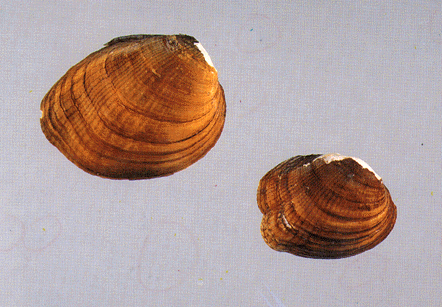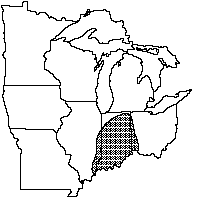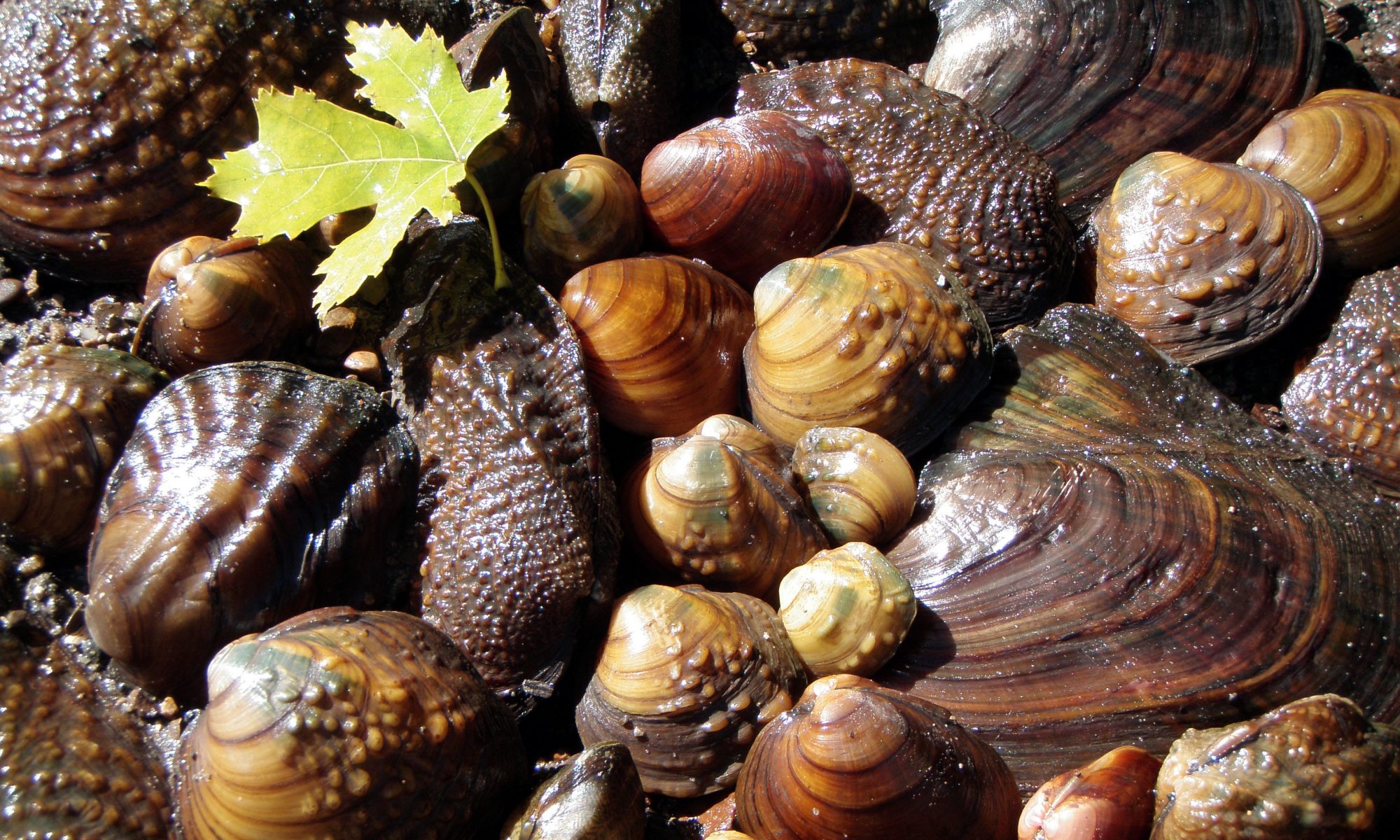Epioblasma obliquata (Rafinesque, 1820)

Other common names: Peewee.
Key characters: Males and females both yellowish brown or brown but much different in shape. Males oblong and solid, with a shallow sulcus along the posterior ridge from the umbo to the ventral margin. Females rectangular, truncated, and inflated pos- teriorly with a finely grooved surface and serrated growth lines.
Similar species: Northern riffleshell.
Description: Shell small, solid, rectangular or quadrate in females, oval and elongate in males, and moderately inflated. Anterior margin rounded, posterior margin bluntly pointed in males, expanded, truncated, ribbed, and notched in females. Ventral margin broadly curved in males, straight to slightly curved in females. Umbos full, about even with the hinge line and directed forward. Posterior ridge double, with a relatively wide sulcus or depression between the ridges in males, depression sharp and narrow in females. Posterior-ventral portion of the shell in fe- males inflated with fine grooves that radiate from the umbo to the margin of the shell. Growth lines serrated on the edge in the pos- terior third of the shell in the female. Periostracum yellowish tan or brown, with numerous fine green rays most evident in females. Length to 2 inches (5.1 cm). Males much larger than females.

Pseudocardinal teeth wide, elevated, serrated, horizontal; two in left valve, one in right with two smaller teeth on either side. Lateral teeth short, straight to slightly curved, roughened; two in left valve, one in right with a much smaller tooth below. Beak cavity shallow. Nacre white to purple, iridescent posteriorly.
Habitat: Medium to large rivers in gravel riffles.
Status: Federally Endangered.

